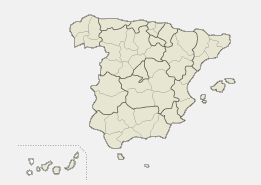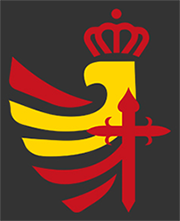- Texto no traducido
- Texto no traducido
- A new Flight Academy takes off
A new Flight Academy takes off
jueves 25 de octubre de 2018
Texto no traducido 68
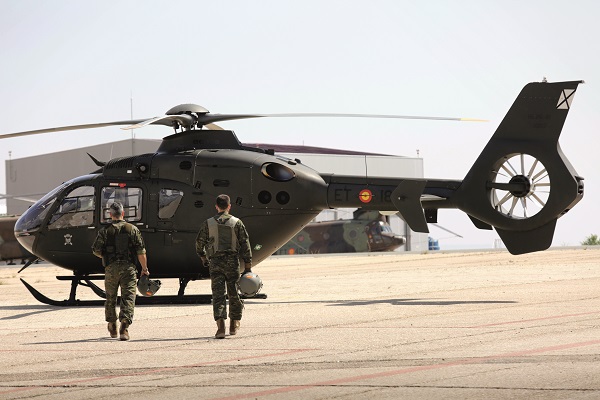
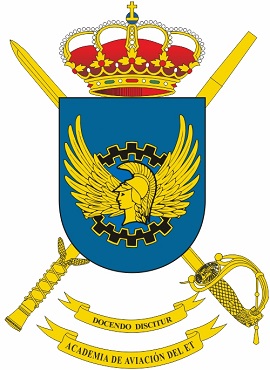
Coat of arms of ACAVIET
It joins the Infantry, Cavalry, Artilley, Engineering and Logistics Academies as a centre for both general and specific military training for Army officers and NCOs. It is in charge of training in the Army Aviation Fundamental Specialty (EFUN), conceived in 2016.
In fact, its implementation is a necessary consequence of the creation of this new specialty. Just like the others, that have their own military training centre, this was also necesary for the air-related disciplines. It became even more necessary, given the high degree of complexity of the current air systems, and the increasing use of helicopters in operations, that demands specific training in techniques and procedures. 'What we teach here aims at responding to the Army needs', claims its first director, Colonel Fuentes. For him, leading the new Academy is a dream he never though he would achieve back in the days when he was a lieutenant coming from Zaragoza, when he first set foot on the 'Coronel Maté' base in Colmenar Viejo (Madrid) to become a pilot.
The Academy as such is brand new, but it is created after the Helicopter's Teaching Centre changed its name. Not only the name has changed, but also its training purposes and the knowledge that is taught. Nevertheless, all the work and experience amassed in the previous stage are key for the success of this new project. Lieutenant Colonel Padilla, chief of the Flight Training Department acknowledges it, and assures that the the greatest challenge of this change is going to be that 'on paper', since 'the courses and their structure are consolidated'. 'It is their format what we must change, adapting it to the schedule indicated by the study plan, as well as incorporating all the new elements that may arise'.
EXCEPTIONAL LOCATION
The Academy is in the same location where the Helicopter's Teaching Centre was—the Colmenar Viejo base (Madrid). The fact of being located inside a base and sharing room with other Force units is quite unusual. In this case, one of these units is the Army Aeromobile Forces Headquarters or the 5th Transport Helicopter Battalion, so peaceful coexistence among them is not hard to imagine. What makes it different from the rest is that the director is not the chief of the base, and the Unit of Services in the base is not a part of ACAVIET.
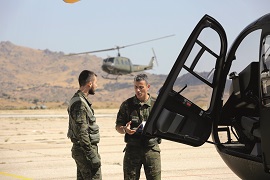
The buildings where the classrooms are located are the same as before. The novelty regarding facilities is the new residence that is about to be finished. The date is due for the start of next year. It will be ready to lodge the 3d year-student sergeants, acommodated in the base's residence in the meantime. They will be joined by the first officer cadets from the Army's Aviation section—possibly in 2020—operating at full capacity.
As for the officers, since it is perfectioning and not training what is taught, they are not residents. However, that will change when the officer cadets arrive. Transformation in the Academy also comes hand in hand with the creation of Cabinet for Educational Guidance and other positions frequently found in training centres, such as the secretary of EFUN or the Museum director. The director of ACAVIET is also the Inspector of EFUN—the person in charge of the maintenance of the moral values and military traditions of the specialty, its ceremonies, symbols, uniforms, and institutional representation.
The Academy is new, but it comes after the Helicopters Teaching Centre's change of name.
LEADER IN RPAS
Apart from training pilots and specialists, the Academy is also responsible for the preparation of Remotely Piloted Aircraft Systems (RPAS) operators—increasingly important means. ACAVIET has inherited the experience its predecessor had in this field. It taught the courses to operate the Autonomous Sensorised Intelligence Platform (PASI) system—the first model—as well as the others that came afterwards. Now, as an Academy, it has come before the launching of new models of these systems, teaching courses that still cannot complete the flight stage, since thes devices are still not available. By doing so, it is ensured that they will be put into service as soon as possible.
THE GEM: ITS SIMULATION CENTRE
One of the pillars that support the excellent training provided to the Army pilots is the Helicopters Simulation Centre at ACAVIET. Any session taught in the course can be made with the simulator and/or the trainers—who are basically like the simulators but without movement. Apart from supporting the future pilots' training, it also supports the training of the personnel in the helicopter units.
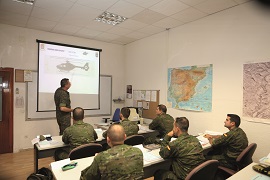
The centre has three headquarters—the central one is in Colmenar Viejo, with the simulators and trainers of all the helicopters models, except from that of the Tiger—located in Almagro—and that of the NH-90—that will soon arrive at the Agoncillo base in La Rioja. At present, Indra— the manufacturing company of the simulators—seeks to improve the systems' interoperability. Connecting the three bases, allowing the helicopters to fly together in one session, would be another step forward for a centre which is already a pioneer. As explained by its director—lieutenant colonel Fernández—the simulation centre is 'at the top of the technological league, both at a military and at a civilian level, and is comparable to the best ones in the world'.
ASSISTED TEACHING CLASSROOM
This high-standard technology can also be seen in the classes. The centre has several Computer Based Training Classroom. Aircraft maintenance specialists can follow the lessons supported by a teacher and an assistant who explains with the aid of detailed cards of all the parts and elements of the helicopter models.
WHAT ITS STUDENTS SAY
- You must study hard, because it is all practice-orientated. Equal attention is paid to theory and practice.
Lieutenant Pardo de Santayana. Pilot Course for Officers
- When you come to study here, you cannot just aim at passing. One day you will have to go aboard the helicopter, and first experiences in the air are always hard.
Sergeant Amate. Aircrafts Maintenance Course
- Back in my Elementary training, I was already keen on helicopters. I am truly happy with the training we are receiving.
Sergeant Vila. Pilot Course for NCOs
INTERNATIONAL PRESTIGE
Since 2014, the Academy participates in a masters in flight rehearsals at the Universidad Politécnica de Madrid which is of utmost interest for the Army, and is only offered by eight schools around the world. It provides pilots and engineers with the necessary training to successfully pass the necessary tests for the aircrafts acquisition, making the process more agile and secure. Moreover, it has another headquarters in Le Luc (France), with two teachers who participate in the training of Spanish and French Tigre and NH-90 pilots. This centre will soon be integrated into the Multinational Helicopter Training Centre from the European Defence Agency. Therefore, there is every reason to claim that this Academy has plenty of resources.
LEGISLATION
- Royal Decree 711/2010, from 28 May. It includes the new Fundamental Specialty Helicopters, only for NCOs.
- Royal Decree 595/2016, from 2 December. It modifies the name Helicopters by Aviation Army, also including officers in this Fundamental Specialty.
- Royal Decree 894/2017, from 6 October. It replaces the name Helicopters Teaching Centre by Army Aviation Academy.
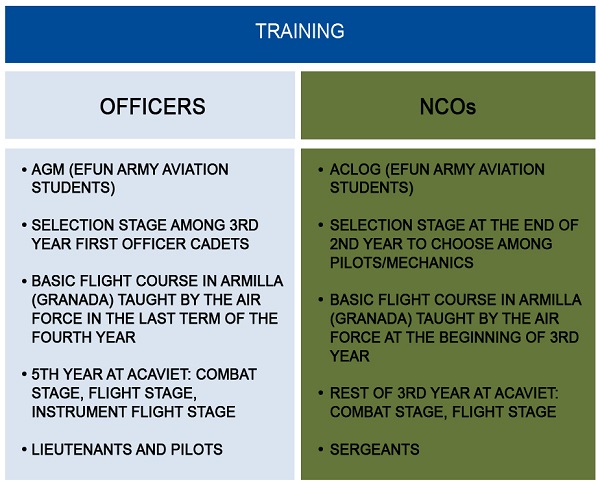
Texto no traducido
- Araba Álava |
- Albacete |
- Alicante |
- Almería |
- Asturias |
- Ávila |
- Badajoz |
- Barcelona |
- Burgos |
- Cáceres |
- Cádiz |
- Cantabria |
- Castellón |
- Ceuta |
- Ciudad Real |
- Córdoba |
- A Coruña |
- Cuenca |
- Girona |
- Granada |
- Guadalajara |
- Gipuzkoa |
- Huelva |
- Huesca |
- Islas Baleares |
- Jaén |
- León |
- Lleida |
- Lugo |
- Madrid |
- Málaga |
- Melilla |
- Murcia |
- Navarra |
- Ourense |
- Palencia |
- Las Palmas |
- Pontevedra |
- La Rioja |
- Salamanca |
- Segovia |
- Sevilla |
- Soria |
- Tarragona |
- Santa Cruz de Tenerife |
- Teruel |
- Toledo |
- Valencia |
- Valladolid |
- Bizkaia |
- Zamora |
- Zaragoza
